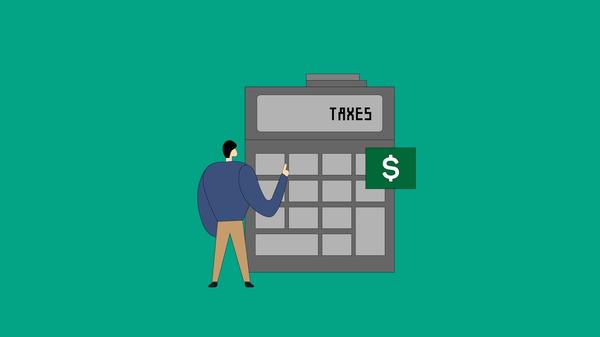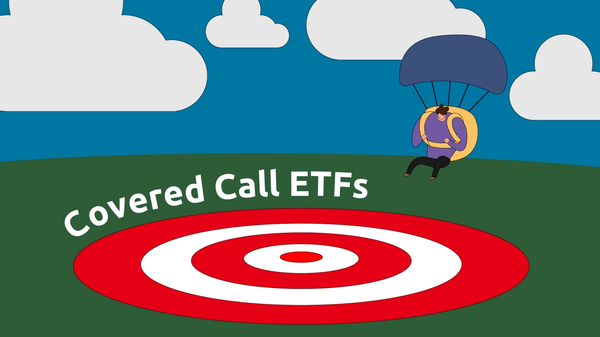There's a lot to like about a Tax Free Savings Account. It has many strengths: it's excellent for shorter-term goals because your contribution room resets every January 1 - but it's also excellent for long-term planning because your portfolio growth potential won’t be slowed down by taxes being taken out, allowing money to compound over time.
While it has a lot of potential, like any investment piece you need to know how best to utilize it.
Here is a primer to learn or expand your knowledge about the TFSA.
What is a TFSA?
The Tax-Free Savings Account was introduced in 2009. Like the RRSP, the TFSA is a government-registered account that offers tax benefits.
What’s the benefit of using a TFSA?
Like with an RRSP, growth is not taxed while it’s in the account, which is a great benefit.
However, the real magic of the TFSA is this: even when you make a withdrawal, you’re not taxed on the growth.
With an RRSP, you contribute “before-tax” funds, and then pay tax on withdrawals. A TFSA is the opposite: you contribute “after-tax” money and don’t pay taxes on withdrawals.
On top of that, when you take money out, that amount does not get added to your income. This feature makes it particularly attractive for people in retirement, but more on that later.
While the TFSA is a great way to save for retirement, it’s likely also the best place to stash funds for short-term goals* because of the annually reappearing contribution limit.
*unless you hold American citizenship
What can I put inside a TFSA?
The name Tax-Free Savings Account has left many Canadians confused, because it makes it sound like nothing more than a high-interest savings account. That could not be farther from the truth.
If you’re only putting cash into a high-interest savings account (HISA) within your TFSA, you’re missing out on the biggest benefit the account offers: untaxed growth.
This makes it a seriously powerful investment vehicle that everyone should be taking advantage of. High growth typically comes from assets such as stocks, ETFs, and mutual funds. Beware that these asset classes also have higher volatility in the short-term, so you’ll want to balance your portfolio with bonds and/or GICs. That means that if you’re saving for short-term goals (within 5-7 years), you’ll want to be conservative with your asset allocation (HISA, GICs) so you’ll know the money is there when you need it.
The asset allocation you choose will depend on you: your age/investing horizon and your risk tolerance. We believe a passive index investing approach is the ideal way to keep your portfolio balanced and diversified while keeping fees low (ideally, you want MERs under 1%).
Who can open a TFSA?
Canadians who are over 18 and have a social insurance number (SIN) can open a TFSA. If you’re an American citizen or dual citizen, it’s likely best to not use a TFSA.
I was older than 18 in 2009 but I didn’t open a TFSA until years later. Have I lost out on the contribution room from past years?
Nope! It doesn’t matter what year you open your TFSA. You’ll still have all your potential contribution room available to you, as long as you were 18 in 2009. If you weren’t, just add up the past contribution amounts since you turned 18. You can also find that information in your notice of assessment from the CRA.
How do I open a TFSA?
You can open one at many financial institutions, including your local bank branch. However, don’t just go with your local bank simply because you’re used to it. You want to look for low fees and high-interest rates, and you’ll usually find those at online-only financial institutions. Because they don’t need to pay rent and other costs associated with physical stores, they’re able to pass those savings on to their customers.
One good option for an online TFSA is through Questrade, Canada’s fastest growing online brokerage. They have low trading fees for stocks plus a long list of ETFs that you can purchase commission-free, which is a particularly useful feature for investors who plan to hold onto their investments for a long time.
If you’re not keen on jumping into self-directed investing, then you could start with Questwealth, Questrade’s robo-advisor. Then when you feel comfortable enough with your investment knowledge, you can choose to make the switch.
What do I need to open a TFSA?
You’ll need to show proof of identity (like your driver’s licence) and your social insurance number (SIN).
Can I have more than one TFSA?
Yes, you just need to be careful about monitoring how much you contribute to each so that you don’t go past your total contribution limit.
Having multiple accounts can be overwhelming, but Passiv makes it easy by allowing you to view and balance across all your Questrade accounts, including RRSPs, TFSAs, and RESPs.
What’s the maximum I can contribute to my TFSA each year?
The contribution limit for 2022 is $6000 (increasing to $6500 for 2023). If you have unused contribution room from previous years, you can use that at any time.
If you were at least 18 years old in 2009 and you haven’t contributed anything to your TFSA, you have $75,500 in unused contribution room. You can find past TFSA dollar limits here and if you weren’t 18 in 2009, you can figure out your limit by adding up the annual limits since you turned 18.
Should I contribute to my RRSP or TFSA first?
If your employer will match your RRSP contributions, then first contribute enough to get the maximum amount that your employer will match. No one should leave free money on the table! After that, it’s up to you whether you want to focus on contributing to your RRSP or TFSA (or both).
If you’re focused on saving for short-term expenses like a car or a wedding, you should use your TFSA. If you’re saving for a home or your education, you could choose between the TFSA or RRSP because the Home Buyers’ Plan and Lifelong Learning Plan allow you to withdraw and repay RRSP funds up to a limit.
There are other factors to consider. A general rule of thumb is that lower earners will do better by contributing to their TFSA first, while higher earners should contribute to their RRSP first.
What happens if I over-contribute?
If you’ve over-contributed, you’ll be taxed 1% of the excess amount per month until you go back under your limit. For example, if you over-contributed $5000, you’ll be paying the government $50/month.
Note that the penalty is calculating using the highest excess amount until you go back under your contribution limit again. So in that previous example, imagine you had $5000 excess the first month, then removed $1000 each month for a total of 5 months. Even though the excess went down every month, your penalty is still calculated using the highest number: $5000 x 1% x 5 months = $250.
If you want more examples of tax penalties on excess contributions, the CRA has you covered.
What happens to unused contribution room?
You can leave unused contribution room for a future year, indefinitely. Just remember that the earlier you contribute, the more time your investments have to grow tax-free, so aim to contribute as much as you can, as soon as you can.
When do I pay taxes on my TFSA?
The money that you put into your TFSA is “after-tax” money: the government has already taken their share. You don’t pay taxes on the annual growth or when you make a withdrawal.
Is there a penalty for taking money out of my TFSA?
Nope! As mentioned above, you already paid the taxes due, so there are no taxes to pay when you take the money out. Plus, the growth is tax-free too. Just make sure that you keep track of your total contribution limit because there is a penalty if you over-contribute (see above).
What happens to my contribution room if I take money out?
If you take out TFSA funds, you get the contribution room back on January 1 the next year. You also get that year’s contribution room ($6000 in 2022) on January 1.
What kind of savings goals should I use my TFSA for?
The TFSA is a great place to put funds that you want to use for shorter-term goals, such as paying for a car, a wedding, self-funding maternity leave, or a down payment for a property.
The reason for this is that your contribution room resets every January 1. For example, if you took everything out of your maxed-out TFSA as a down payment, you’d get all that contribution room back in the next calendar year, plus the new year’s contribution amount. You can then re-contribute on your own schedule. With an RRSP, you lose your contribution room forever unless you make use of the Home Buyers’ Plan or Lifelong Learning Plan.
Note that if you’ve earmarked TFSA funds for a short-term goal (less than ~7 years), you’ll likely want to have them in a high-interest savings account or GICs. While you might get higher returns from stocks, it’s also possible that a market downturn happens before you need the funds, seriously cutting down your savings right when you need them.
Okay, what about using my TFSA for retirement savings?
Ding ding ding! While the TFSA is a great place to keep money in the short-term, you get the fullest benefit by using it as a long-term (we’re talking decades) investment account. Since the growth is tax-free, your portfolio growth potential won’t be slowed down by taxes being taken out. Instead, that money stays in your account and starts to compound over time. Einstein didn’t call compound interest the 8th wonder of the world for nothing; its effect is seriously near magical. This is why getting your first $100,000 is the hardest part of building your nest egg and takes the longest amount of time. Seriously, click that link (there are pretty graphs!).
Can I contribute to my spouse’s TFSA?
You cannot directly contribute to their TFSA but you can give them funds that they can contribute themselves. This is beneficial because it doubles the family’s total contribution limit for tax-free growth.
If one spouse passes away before the other, what happens to their TFSA?
This depends on whether you’ve named each other as simply a “beneficiary” or as the “successor holder”.
A beneficiary would get the full value of the account at the time of the spouse’s death, but any growth in the account between the time of death and the closing of the TFSA would be added to their income and taxed.
You can avoid that situation by naming your spouse your successor holder. Upon your passing, they become the new holder of your TFSA, even if their own TFSA is maxed out. Note that you can only name your spouse or common-law partner as your successor holder. If you want the funds to go to anyone else (children, etc.), they can only be named a beneficiary.
Is there an age limit for TFSA contributions?
You need to be at least 18 years old but there’s no upper limit for contributions, unlike RRSPs.
Do TFSA withdrawals affect my government benefits?
No. They don’t impact benefits such as the child tax benefits, old age security, and guaranteed income supplements. Because of this, it would be beneficial to use your TFSA as a supplemental retirement account, since it can give you an even greater income in retirement, without bumping you up into a higher tax bracket.
And that’s all! If you don't have a TFSA, it's never too late. Now is the time to get moving and contribute!
Put your financial goals into action! Have you got children? Be sure to check out our piece on how RESPs can help you save for their education.


